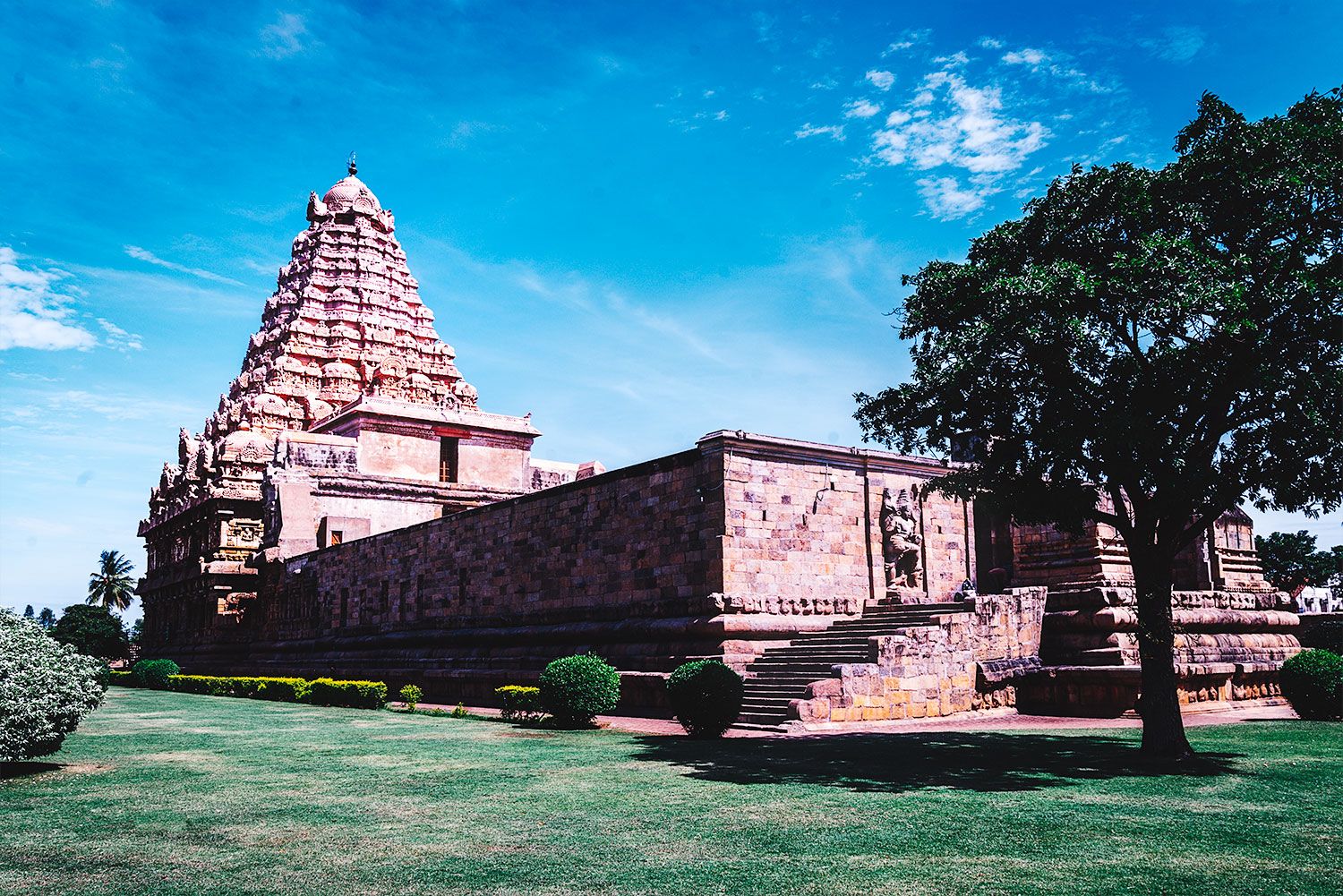The Chola Temple at Gangaikonda Cholapuram
The form of the Chola statue is lean, slender, its pose delicate, and the features of male and female are so sharp you can cut with them.

We left for Gangaikonda Cholapuram (GKC) at 7:30, which wasn’t early enough because there was already traffic congesting the 65-kilometre stretch from Tanjore. Roads in Tamil Nadu are the Kannadiga’s envy, but this one was narrow even if the asphalt was thick and hole-free. Anyway, we weren’t driving, and Chandran, the hotel driver, did his job in sober silence, and Sujaya and I relaxed, looking out at this sun slathered, green part of Tamil Nadu.
The Tanjore region is celebrated as the Rice Bowl of the State. In the cool inside we couldn’t tell the 38°c heat that raged outside, so deceptive was the green-carpeted fecund land seen through the glass. There were staple crops in the fields, and patches of teak, and tamarind and occasional mango and neem alongside the road.
The heat hit when Chandran opened the doors at the grand temple in GKC. The barefoot walk in the precinct was torturous, the stone searing the soles as we went gingerly from portal to door.
I envy the Christians their chapels. They’re always clean, anywhere in the world. When you go in, the altar is immediately in view, you don’t compete for a _darshan_ of it. There’s never noise there, and you can go in with shoes on. I’ve sat many times in the quiet comfort of chapels and meditated on my Hindu god. (I’m sure the good Christians don’t mind.)
But the GKC temple was clean as well, and quiet, and the details of the deity — a tall lovely Shivalinga — could be seen from a distance, right from the door. It’s a long walk from the entrance to the garbha in this magnificent temple.
Two chains hang on either side of the Shivalinga, with three oil lamps attached to each, six in all — they are the only light source in the sanctum. The coils of Naga round the Linga, the hood of Naga flared over the Linga, the entire length of the divine serpent from head to tail-tip is covered in gilt. It catches the lamplight and gleams along the edge. A sheen runs down the face of the Linga, framed by shadows on the sides. My hands went up on their own and folded in *namaskara*. The sight had cast a spell over me.
Gangaikonda Cholapuram roughly translates to The City of the Chola Who Conquered the Ganga. King Rajendra Chola’s marches reached Bengal in the North, Lanka in the South, and the Khmer kingdom beyond the eastern seas. Winning the North, he brought to his capital the holy water of the Ganges, earning the title Gangaikonda Chola, rising to equal the greatness of his father, the great Rajaraja. Rajendra’s father ruled the Chola empire for 37 years — the years are marked as the golden age of the Cholas. That was a thousand years ago.
King Rajendra’s temple in Gangaikonda Cholapuram is smaller than the great one his father built in Tanjore, but the artistry and technique employed in it are more sophisticated, standing on the shoulders of that achieved by the father.
Outside, a bony sunburnt mali was hosing the quite-green lawn. In sparse shadow, we sat sweating in the heat and gazed at the art on the walls. The form of the Chola statue is lean, slender, its pose delicate, and the features of the male and the female are so sharp you can cut with them. Whereas the Hoysalas, ruling to the west of the Cholas, had a taste for the buxomer, especially in women. My wife voted with me for Chola art, and back that evening in Tanjore, we bought two Chola bronzes that are proudly displayed in our home.
Read also: Rajesh Vaidhya at the Brihadisvara Temple in Tanjore
